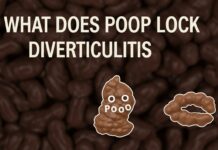How is Hoof and Mouth Disease Spread?
Horing-and-mouth disease (HMD), often called foot-and-mouth disease (FMD), is a fast-spreading virus that hits cloven-hoofed animals-cattle, pigs, sheep, goats, and even deer. Because it spreads so quickly, HMD endangers entire herds and carries huge costs for farmers in lost exports, long quarantines, and the culling of sick or exposed stock.
In this broad guide, we will find out how hoof and mouth disease is spread, check primary transmission routes, and identify control strategies used worldwide. This post will help farmers, veterinarians and animal health professionals understand the importance of initial identity, bio -safety and disease prevention protocol.
.What is Hoof and Mouth Disease?
Hof and mouth disease Piconvirida is caused by a FMD virus in a member of the Aptovirus genus in the family. The virus consists of seven serotypes, each of which contains several sub -factories, which makes the vaccine increase and disease management more complex..
The virus primarily affects the epithelial tissues of animals, causing blisters on the mouth, tongue, teats, and feet, leading to lameness, weight loss, and a significant drop in milk production.
Although FMD rarely infects humans, it spreads extremely quickly among animals and can devastate livestock populations if not controlled.
Read more: US States Most Blind
The Main Ways Hoof and Mouth Disease Spreads
There are several methods that can be transmitted to FMD virus. Understanding each method helps in implementing effective control and elimination strategies.
1. Direct Contact Between Infected and Healthy Animals
The most common mode of transmission is direct animal-ps. contact. Infected animals leave large amounts of viruses through saliva, mucus, milk and stool.
Healthy animals become infected when they:
- Inhale aerosolized virus particles
- Consume contaminated feed
- Come into contact with infected bodily fluids
This makes animal proximity a major risk factor. Overcrowded barns and communal grazing areas are hotbeds for viral spread.
Bolded LSI/secondary keywords in this section: Keeping farm animals healthy means tracking the disease quickly, whether it is cattle bug, a goat disease, or pork fever that hits hog. Helping producers to spot the quick cuts increases the loss of cuts and prevents outbreaks from spreading from the field.
2. Indirect Transmission Through Contaminated Objects (Fomites)
FMD can survive on shoes for equipment, vehicles, clothing and even extended periods, especially in a cold environment. These contaminated surfaces, known as foamites, play an important role in the spread of the disease.
This is why strict farm bio -safety protocols are important. Workers should clean the gear, disinfect machinery, and avoid sharing equipment between infected and clean fields.
Bolded LSI/secondary keywords in this section:
aerosolized virus transmission, airborne cattle disease, pork farm infection, liveLSI/Secondary Keyword Bold in this section: Farm disinfection, control of agricultural virus, barn hygiene, livestock trailer contamination, cloth-borne virus
3. Airborne Transmission Over Long Distances
In specific environmental conditions, especially with windy weather, the FMD virus can travel long distances in aerosol form. There have been outbreaks where the virus has traveled over 100 km, especially from infected pig farms where large quantities of the virus are expelled.
Airborne transmission is one of the reasons that are not enough for geographical obstacles alone to disease control.
Stock viral drift, windborn cattle disease
4. Movement of People, Animals, and Animal Products
Transport of infected animals such as meat, milk and leather or transportation of animal-rich products is another major contributor to the spread of FMD. The virus can survive in frozen or processed products, making international trade a serious risk factor.
Similarly, farm workers, traders and veterinarians who run between the fields without proper refinement can act as a carrier of the virus.
Bold LSI/Secondary Keywords in this section:
Infected animal transport, livestock product disease, milk-borne virus, international livestock trade, bio-safety failure
5. Wildlife Reservoirs and Transmission
In some areas, wild animals serve as reservoirs for viruses. This includes:
- Deer species
- African buffalo
- Wild boars
They can carry and spread the disease up to domestic livestock. This is especially challenging in areas where the farming range is forest or store.
Bolded LSI/secondary keywords in this section:
wildlife-to-livestock diseases, FMD in buffalo, boar-transmitted virus, forest farm interaction, natural virus carriers
Symptoms of Hoof and Mouth Disease
Recognizing symptoms early is vital to controlling an outbreak. Common signs include:
- Blisters on the tongue, lips, and hooves
- Excessive drooling
- Lameness and reluctance to move
- Fever and depression
- Reduced milk yield
Affected animals may also show loss of appetite and weight loss due to painful lesions.
Bolded LSI/secondary keywords in this section:
mouth blisters in cows, cattle foot swelling, pig lameness, dairy cow fever, virus-induced weight loss
Factors That Increase Risk of Disease Spread
Some practices and conditions may increase the spread of FMD:
- High density livestock farming
- poor sanitation
- Shortage of vaccination
- Irregular animal trade
- Insufficient quarantine measures
The virus flourishes in areas with poor veterinary infrastructure and limited government monitoring.
Bolded LSI/secondary keywords in this section:
high-risk farm practices, animal overcrowding, vaccine deficiency, quarantine neglect, poor livestock regulations
Prevention and Control of Hoof and Mouth Disease
Quarantine and Movement Restrictions
When an outbreak is suspected, immediate quarantine of the farm is necessary. Movement restrictions on animals and animal products are enforced to stop further spread.:Bold LSI/Secondary Keyword
Livestock Quartage Rules, Form Lockdown, Disease Control Area, Movement Permit System, Animal Product Bans
Culling and Disposal of Infected Animals
In many cases, governments apply a kaliing strategy to eradicate the disease. This includes human assassination and safe disposal of infected and exposed animals (often through Bhasma or burial).
Bolded LSI/secondary keywords:
cattle depopulation measures, mass animal culling, infection containment protocols, disease response teams, biohazard livestock disposal
Vaccination Programs
Vaccination is a critical control measure in endemic regions. However, because of the many virus serotypes, vaccines must be matched to local strains. Some countries avoid routine vaccination to maintain disease-free trade status.
Bolded LSI/secondary keywords:
FMD vaccine types, cattle immunization plans, serotype-specific vaccine, swine vaccination program, herd immunity goals
Public Awareness and Farmer Education
Education campaigns help farmers recognize early signs of disease, understand reporting procedures, and adopt preventive practices. This includes:
- Limiting visitor access
- Disinfecting entry points
- Isolating new livestock arrivals
Bolded LSI/secondary keywords:
farmer virus education, livestock health training, animal biosecurity workshops, rural veterinary outreach, disease prevention awareness
Hoof and Mouth Disease Outbreak History
Several major outbreaks have shaped the global response to FMD. The 2001 UK outbreak led to the slaughter of over 6 million animals, costing billions in economic damages.
Other significant outbreaks occurred in:
- Taiwan (1997)
- South Korea (2010)
- India (ongoing endemic presence)
Bolded LSI/secondary keywords:
UK livestock crisis, Taiwan pig outbreak, Korea foot and mouth event, Indian cattle disease, global livestock epidemic
Challenges in Controlling FMD
Control of hoof and mouth disease is difficult due to:
- Rapid mutation of the virus
- High infectivity
- Difficulty in early detection
- Long-distance airborne spread
A single outbreak can derail agricultural exports and affect global food security.
Bolded LSI/secondary keywords:
mutating animal viruses, FMD surveillance difficulty, export ban due to disease, epidemic preparedness gaps, veterinary diagnostic delay
Final Thoughts
Understanding how hoof and mouth disease is spread is essential for protecting global livestock populations and preserving the integrity of the animal agriculture industry. While it poses minimal direct threat to human health, its economic and agricultural consequences are enormous.
Through education, early detection, biosecurity measures, and international cooperation, we can minimize outbreaks and protect both animal welfare and farm economies.








